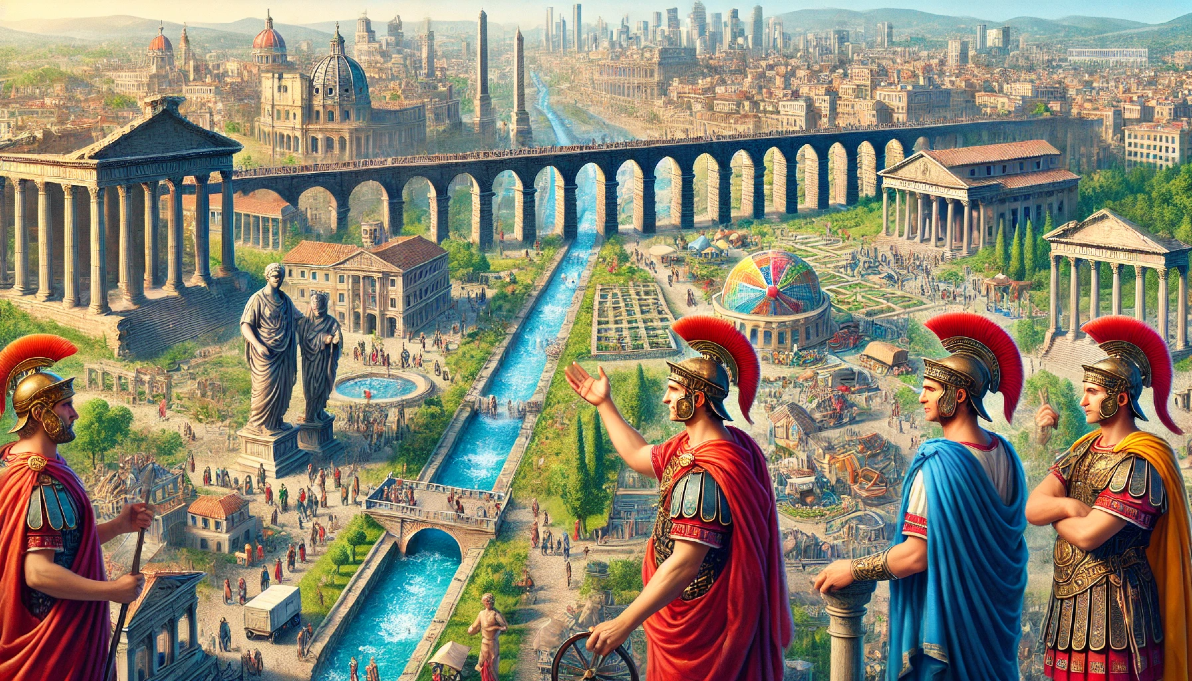Real Estate Price Crises Throughout History
Concerns about exorbitant housing prices are not exclusive to our era or merely a byproduct of capitalist systems. Although in the 21st century we often associate housing crises with real estate bubbles, speculation, and a lack of access to credit, these same problems have affected societies very different from ours, dating all the way back to Ancient Rome.
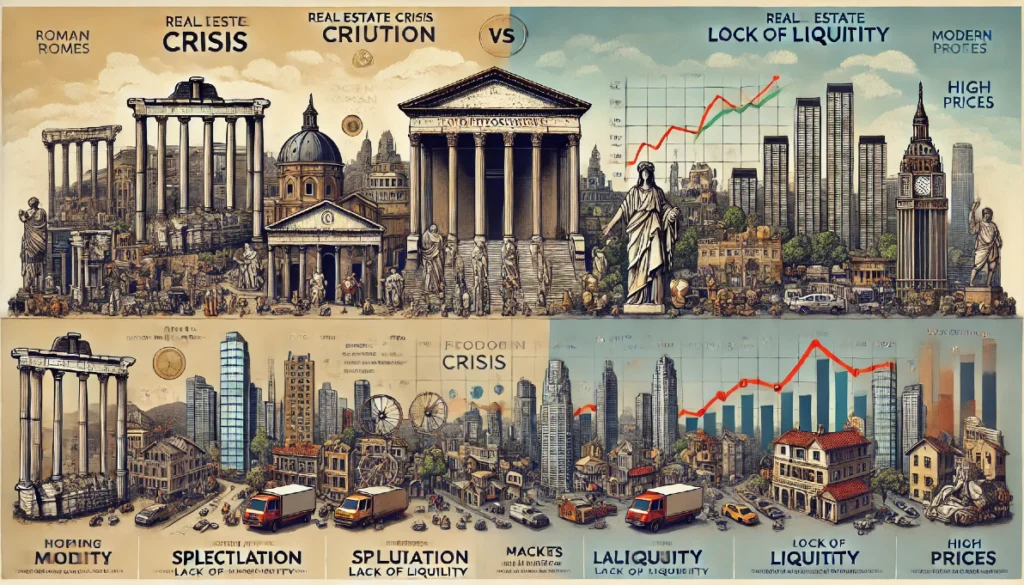
During Emperor Tiberius’s reign (14-37 AD), Rome experienced a real estate and financial crisis that destabilized its economy. Massive debt and a lack of liquidity led to a collapse in the real estate market that, while occurring in a very different context, reflects dynamics that will seem strangely familiar to us. The appeal of properties as a symbol of wealth and the pursuit of financial security fueled a bubble, putting housing beyond the reach of many. Economic policies and the flow of credit, just like today, played a crucial role in the escalation and eventual collapse of the real estate market.
Examining this crisis in the Roman Empire helps us understand how certain housing issues have deep historical roots and how political responses can make a difference in their resolution.
The Economic Boom Under Augustus: The Real Estate Bubble and the Path to Crisis
Augustan Rome transformed into a prosperous and vast empire, thanks to military conquests and the stability brought by the Pax Romana. To maintain popular support, Augustus implemented a policy of expansive public spending, which included direct subsidies to citizens, relaxing credit-granting requirements, and a massive public works program that modernized infrastructure and stimulated economic growth. This allowed disadvantaged citizens, especially former slaves and artisans, to accumulate wealth.
At this time, land became the most attractive asset for the newly wealthy, as it symbolized political and social power. The upper classes and emerging groups began accumulating properties and speculating in the real estate market, in a situation that mirrors the “property-owning society” promoted by many modern governments, such as the United States in the 2000s. However, the real estate frenzy generated under Augustus left the Empire with scant reserves, making it vulnerable to any recession.
Tiberius’s Austerity and the Triggering of the Crisis of 33 AD

When Augustus passed away, his successor, Emperor Tiberius, inherited a Rome with barely 100,000 sesterces in the treasury and an inefficient fiscal system that depended on extracting taxes from the provinces to sustain the city and its inhabitants. Unlike Augustus, Tiberius was fiscally conservative, despised the social rise of former slaves, and preferred to impose a policy of fiscal austerity. With this austere approach, Tiberius sought to cut expenses and stabilize Roman finances:
- Reduction of public works: Tiberius decreased spending on public works by 75%, halting one of the key drivers of the economy.
- Restriction of credit: He tightened credit conditions, limiting interest rates and restricting the granting of new loans.
- Cutback of transfers: Direct subsidies to the population of Rome were reduced, even though they already enjoyed privileges and tax exemptions.
These measures, while prudent from a public savings perspective, led to a collapse of credit and a deflationary phenomenon that particularly affected the real estate market and construction, causing a widespread fall in property prices and creating a chain of defaults and a loss of asset value.
Consequences of the 33 AD Crisis: A Real Estate and Financial Collapse
The result was an unprecedented financial panic: over-indebted property owners were forced to sell their properties hastily and at low prices, creating a spiraling depreciation of assets. As Tacitus observed in his Annals, the market collapsed, generating a lack of confidence and a “scarcity of money” that devastated the Roman economy.
Social conditions further exacerbated the situation. Rome faced frequent famines, with a growing urban population, and a socio-economic system where one-third of the city’s inhabitants were slaves who had no rights and depended entirely on the stability of their masters. Property values plummeted, but slaves, who held significant value as laborers, remained key assets, preserving a minimal base of economic activity amid the collapse.
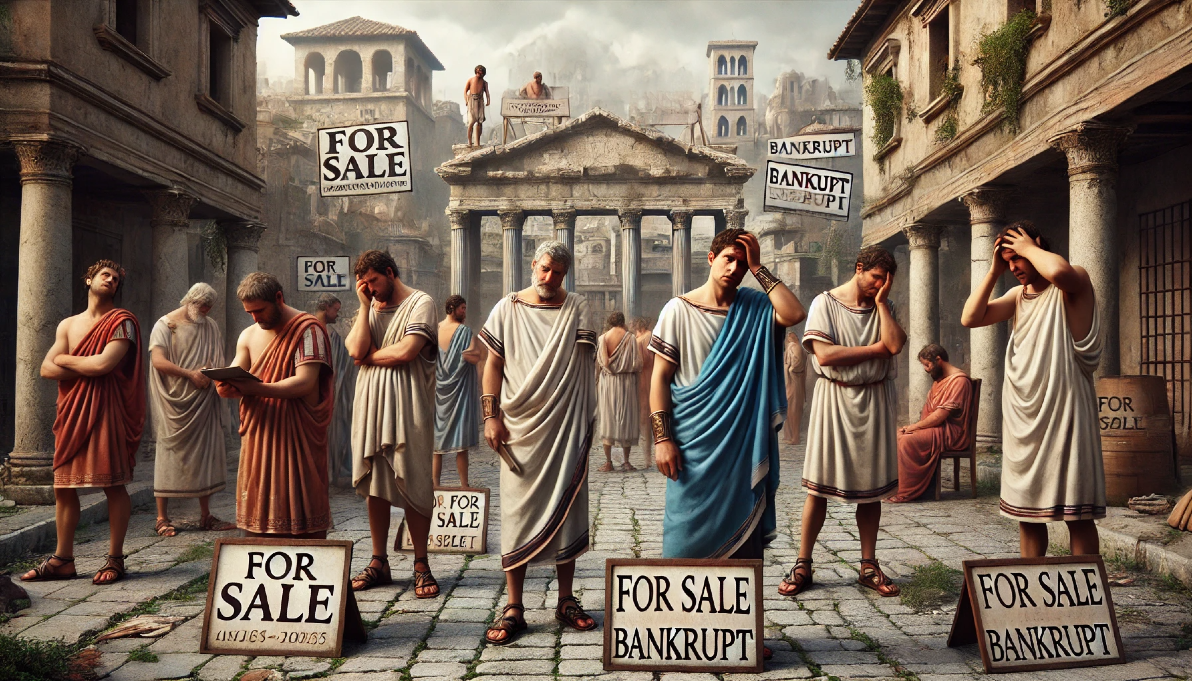
Tiberius’s Intervention: The First Financial Bailout in History
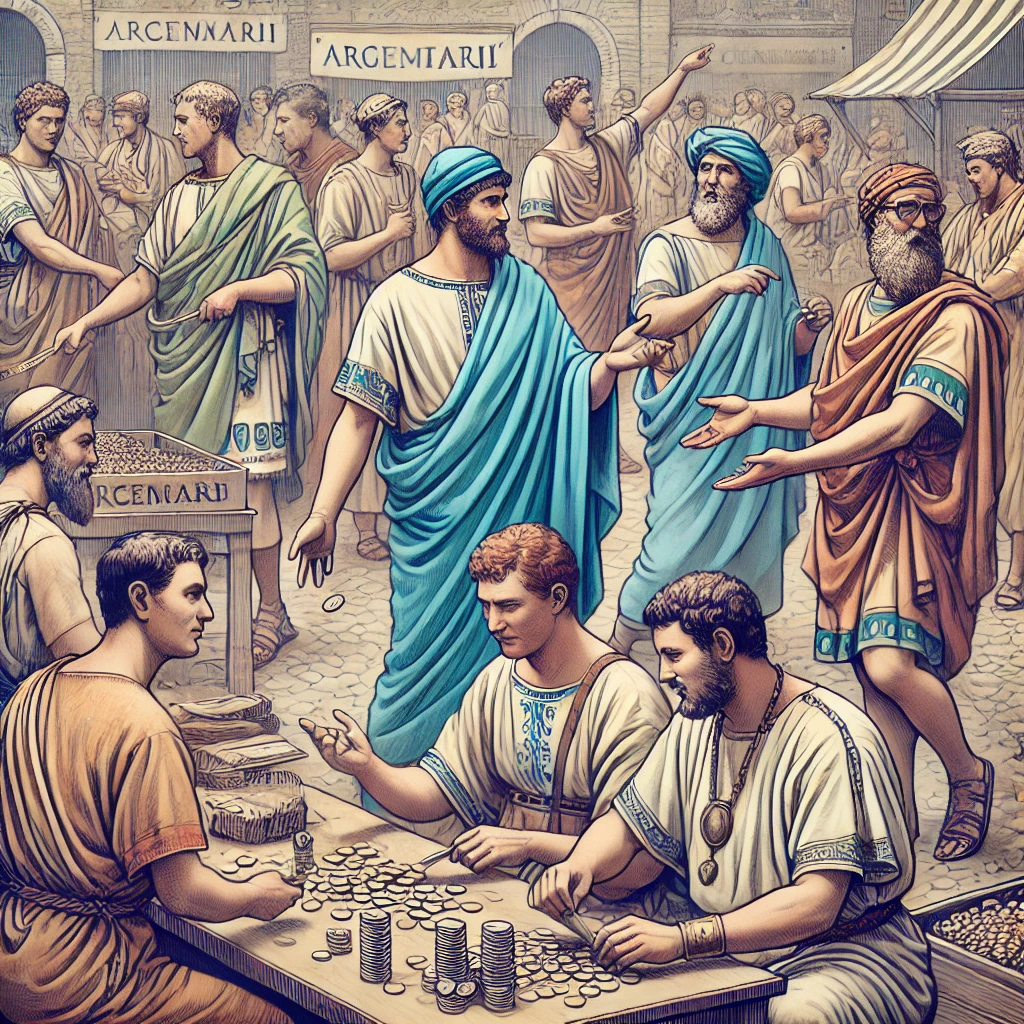
To stop the crisis, Tiberius implemented what some consider one of the first “financial bailouts” in history:
- Debt moratorium: An 18-month delay in debt payments was granted to avoid a mass sale of properties.
- Capital injection: Tiberius injected one million gold coins into the system, which were lent without interest for three years in an attempt to reactivate credit.
- Credit oversight: A group of senators was designated to oversee the granting of these loans and ensure that they were directed toward economic recovery.
These measures succeeded in halting deflation and restoring some confidence in the system, providing the relief needed for the market to regain stability.
The Legacy of Tiberius and Expansion Under Caligula and Claudius
Despite partial recovery, the Roman economy did not fully flourish until Tiberius’s successors, Caligula and Claudius, adopted a more expansive economic policy. They implemented a public works program, and in particular, Claudius pushed for a new cycle of monetary expansion and relaxation of credit conditions, similar to Keynesian policies. When Tiberius died, his unpopularity became evident: Roman crowds demanded, in a sign of disdain, that his body be thrown into the Tiber River. His experience demonstrates how restrictive fiscal policies can be effective in the short term but are insufficient for a sustained recovery over time.
Lessons from Rome for Today’s Housing Crises
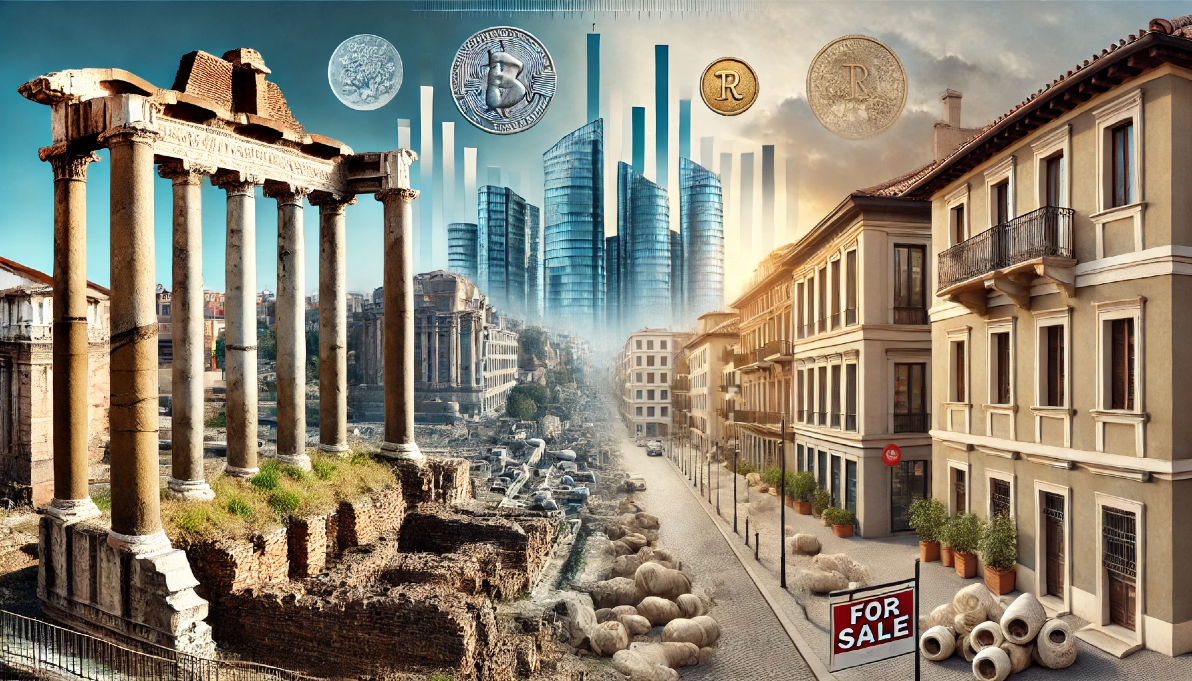
The financial crisis of 33 AD and the measures taken by Tiberius remind us that issues of debt, credit, and the real estate market are age-old problems. While political and economic systems have evolved, the dynamics of trust and real estate speculation have repeated throughout history. Public intervention was key to recovery in Rome, and it remains just as essential today.
History teaches us about the importance of balance in regulation and prudence in managing the economy to avoid recurring crises in the real estate markets. This lesson, as relevant today as it was two millennia ago, reminds us that in times of crisis, governments and citizens must act prudently to ensure lasting stability in the housing market.
References
Ando, C. (2000). Imperial Rome AD 193 to 284: The Critical Century. Edinburgh University Press.
Bingham, A. (2010). Roman Economic Policy and the Empire. Cambridge University Press.
Bowman, A. K. (2013). The Roman World: A History of Rome’s Empire. Oxford University Press.
Garnsey, P., & Saller, R. (1987). The Roman Empire: Economy, Society, and Culture. University of California Press.
Jones, A. H. M. (1974). The Roman Economy: Studies in Ancient Economic and Social History. Oxford University Press.
Kalle, S. (2005). “Roman real estate and the debt crisis of Tiberius.” Journal of Roman Economic History, 3, 45–67.
Suetonius, G. (1957). The Twelve Caesars (R. Graves, Trans.). Penguin Books.
Tacitus, C. (1996). Annals of Imperial Rome (A. J. Church & W. J. Brodribb, Trans.). Penguin Classics.

Olive Oil: Health Benefits, Types & Mediterranean Secrets

Iberian Ham: Everything You Need to Know to Choose Like a Local in Spain

I Struggled to Save Money for Years — Until I Changed My Mindset (and One Simple Habit)


